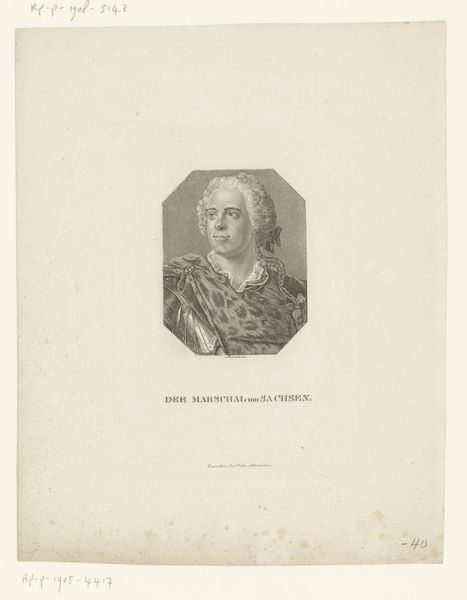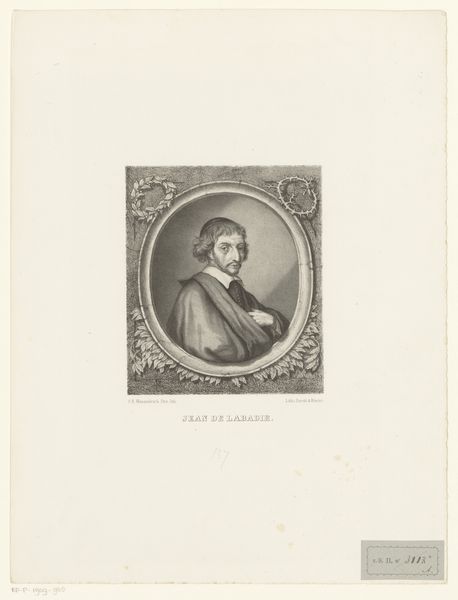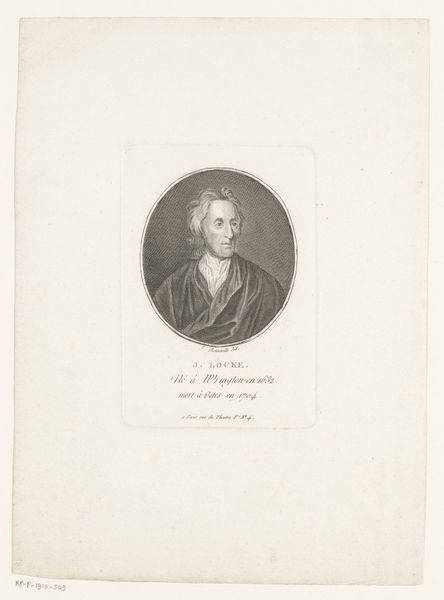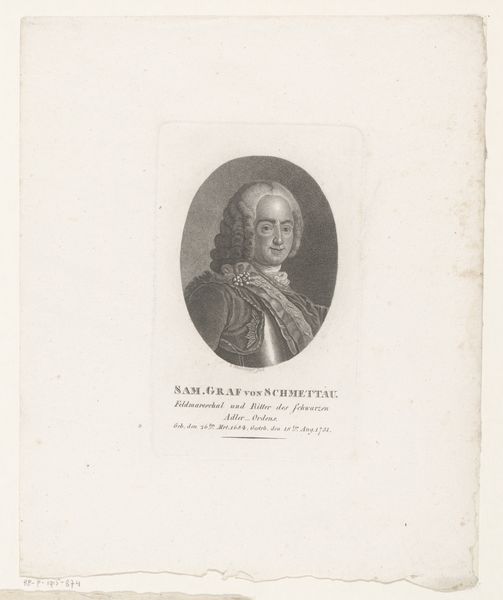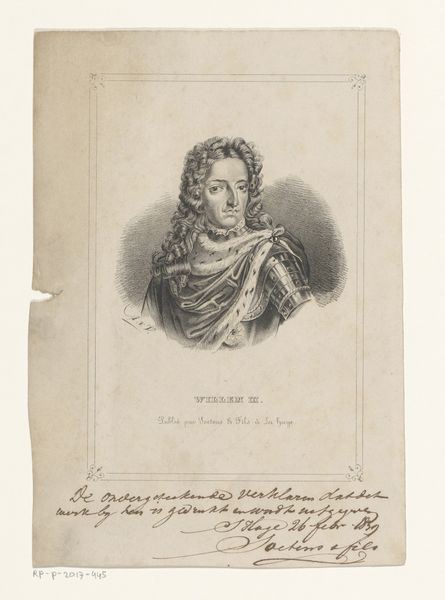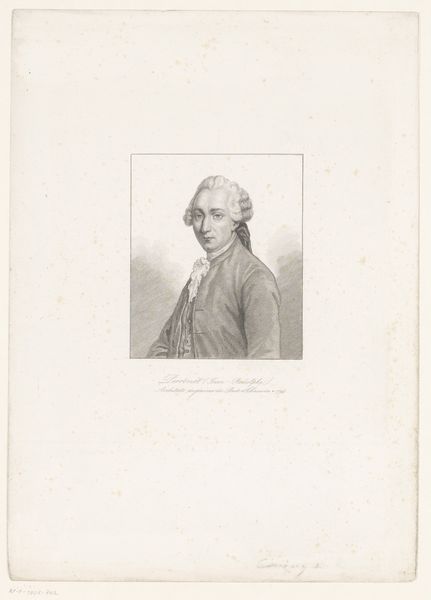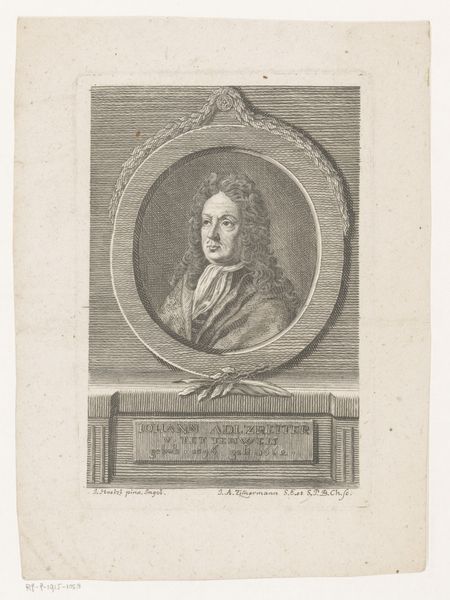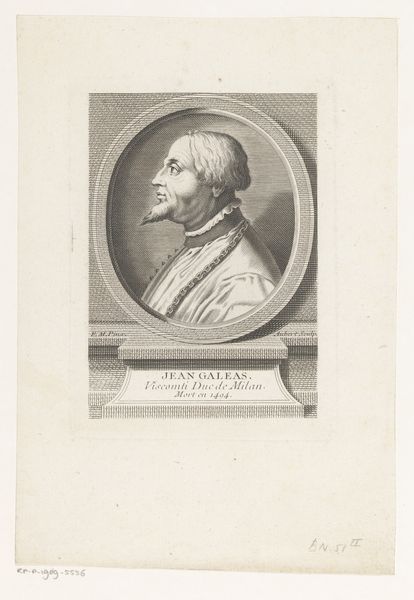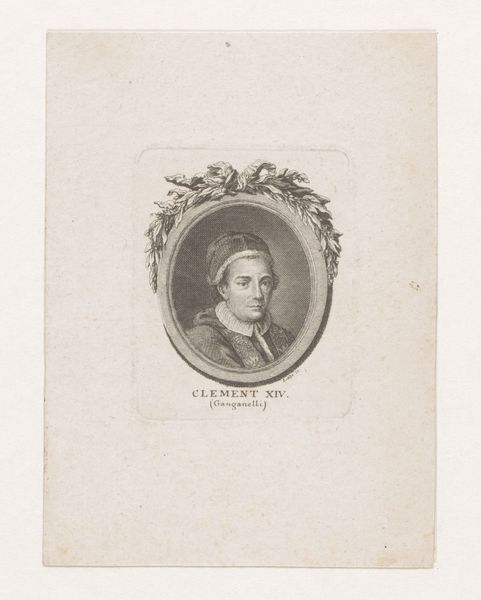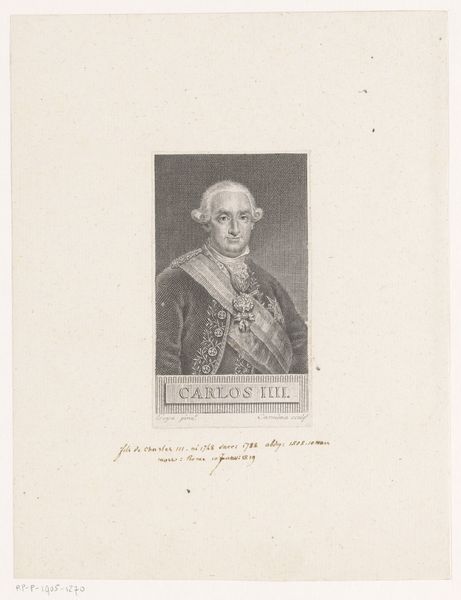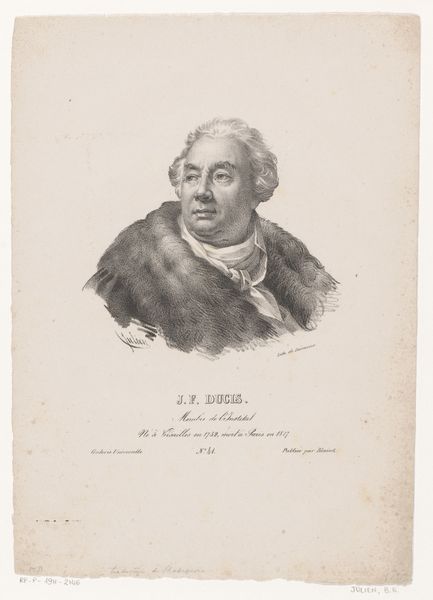
print, engraving
#
portrait
#
neoclacissism
# print
#
old engraving style
#
academic-art
#
engraving
#
realism
Dimensions: height 182 mm, width 126 mm
Copyright: Rijks Museum: Open Domain
Editor: Here we have Auguste Adrien Jouanin's "Portrait of Jean-Antoine Roucher," a print from sometime between 1816 and 1887, exhibiting Neoclassical and Realist traits. The intricacy of the engraving is fascinating! What's particularly striking about this piece to you? Curator: Looking at this engraving, I see not just a portrait, but a document of labor. Consider the material: the copper plate, the paper, the ink. Each requires a specific process, skill, and access. Who controlled these resources? Who benefited from their distribution? Understanding the social and economic context surrounding its production complicates its status as mere portraiture. Editor: So you are saying that by looking at the material we can learn about production? How the cultural environment may have contributed to its aesthetic style? Curator: Precisely! Engravings were reproducible; therefore, access to art, in general, widened in scope during this period. Did this increased availability democratize the portrait, or was it still largely confined to certain classes of society? How did the status of the engraver compare to that of the painter during the same era? What effect did that production have on cultural values? Editor: It is a piece made available through reproducibility and, thus, implies cultural values and, moreover, has potential sociopolitical implications through the means of distribution, not inherently found in paintings. So cool. I hadn't thought about it that way. Curator: Indeed. And what about the paper itself? Was it hand-laid, industrially produced? Its very materiality speaks volumes about shifts in manufacturing processes during that era. This approach helps us look beyond surface aesthetics. Editor: Definitely. I'll be much more attuned to the material aspect from now on. Thanks!
Comments
No comments
Be the first to comment and join the conversation on the ultimate creative platform.
